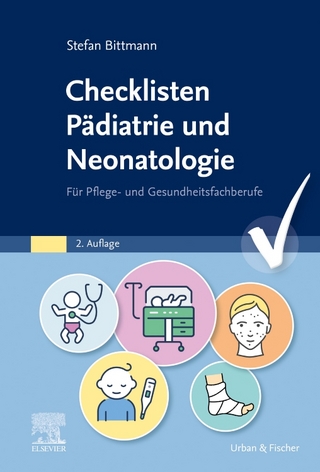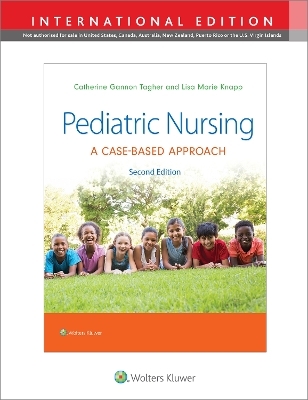
The Art and Practice of Home Visiting
Brookes Publishing Co (Verlag)
978-1-68125-446-3 (ISBN)
For more than a decade, The Art and Practice of Home Visiting has been a go?to guide for effective, culturally sensitive home visits with young children and families. Now reframed as a textbook for a new generation of home visitors, this second edition includes student?friendly features, downloadable course companion materials, and fresh content on timely topics.
Presenting a collaborative, family?centered approach to home visiting, Cook and Sparks prepare preservice professionals to form respectful and productive partnerships with caregivers and help each unique family reach their specific goals. Future home visitors will get practical, in?depth guidance on all the complex issues they'll face in their work with families and children, including implementing evidence?based practice; providing trauma?informed care; and addressing challenges with sleep, feeding, and behavior.
A foundational text for future professionals—and an ideal source of wisdom and guidance for in?service practitioners—this book will help all home visitors master the art and practice of effective home visiting with today's diverse families.
WHAT'S NEW:
New student-friendly features: Learning Outcomes and Read?Reflect?Discuss Questions in each chapter, case studies, chapter summaries, and a glossary
Expanded focus on all home visitors working with children with and without disabilities
New and updated content on critical topics, such as resolving barriers to successful home visits and working with culturally, linguistically, and economically diverse families
Expanded table of contents for easy navigation
Increased focus on family?centered home visiting and the home visitor as a collaborative coach and partner for the family
A complete package of downloadable companion materials for faculty
ONLINE COMPANION MATERIALS: Faculty members will easily integrate this book into their courses with the online companion materials, including a sample syllabus, test bank, and PowerPoint outlines.
TOPICS COVERED:
history of home visiting
collaboration with diverse families
formal and informal assessment
evidence-based intervention
trauma-informed care and the pandemic
the structure of effective home visits
facilitation of caregiver-child relationships
family empowerment
interpreters and translators
cross-cultural conflicts
legal, ethical, and personal safety concerns
common challenges such as sleep, feeding, and behavior
different types of families, including military families, teenage parents, and immigrant families
children with specific disorders, such as autism, Down syndrome, and motor challenges
Dr. Cook earned her doctorate degree with an emphasis on developmental psychology and two related master of arts degrees from the University of California at Los Angeles. She focused her interest on young children with special needs while serving as Director of the Early Childhood Center at Southern Illinois University at Edwardsville and the Child Development Center at Mount Saint Mary's College in Los Angeles. Daily involvement with families of children from highly diverse backgrounds convinced her of the importance of fully involving families in all aspects of their children's development. More than 25 years ago, Dr. Cook recognized the value of providing practical training based on evidence-based practices designed to facilitate inclusion of young children with special needs in natural environments. To this end, she initiated the publication of the coauthored Adapting Early Childhood Curricula for Young Children with Special Needs (Prentice Hall, 2007). This pioneering text is now in its 7th edition. In addition, she is a co-author of Strategies for Including Children with Special Needs in Early Childhood Settings (Thomson Delmar Learning, 2000). She has directed several federal training grants that provide tuition assistance to prepare students to work with young children with special needs both in their homes and in center-based programs. Dr. Cook consults widely and presents often in the areas of family-professional relationships and strategies for effective inclusion. While at Western Michigan University, Ms. Sparks spent a sabbatical year with the department of public health in Battle Creek, Michigan, doing home visits with public health nurses. More recently she was an adjunct faculty member in the Department of Early Childhood Education at Santa Clara University, Santa Clara, California. She received her Bachelor of Arts degree in speech pathology and audiology from the University of Iowa, her Master of Arts degree also in speech pathology and audiology from Tulane University, New Orleans, and completed all but her dissertation in the Ph.D. program in the School of Public Health at the University of Michigan, Ann Arbor. Ms. Sparks was a pioneer in early intervention, working with families, home visiting, and giving numerous presentations throughout the county. She has felt strongly that it is necessary to remain a practitioner in the field to experience real problems that early interventionists encounter. Until very recently, she served as a consultant to HOPE Homestart in San José, California, a home program for children with special needs between age 0 and 3. A fellow of the American Speech-Language-Hearing Association, Ms. Sparks has authored training modules and many articles and chapters on early intervention and the family in addition to a book on genetics in speech-language disorders and a book on the effects of prenatal substance abuse on speech and language.
About the Downloads
About the Authors
About the Contributor
Foreword
By Kathy Wahl
From a Mother to Her Home Visitors
Preface
Acknowledgements
Section I
Chapter 1: An Overview of Home Visiting
Learning Outcomes
History of Home Visiting
Eradication of Poverty by Changing Environmental Conditions
Massive Arrival of Immigrants
Rapid Transformation of Society
Early Home Visitors
Lessons from The Past
Home Visiting Today
Competencies Needed
Home Visitors as Coaches
Remote Home Visiting
Philosophy and Approach to Home Visiting
Approaches to Home Visiting
Child Focused
Family Focused
Collaborative Team
Evidence-Based Practice
Critical Needs Positively Impacted by Home Visiting
Healthy Babies
Safe Homes and Nurturing Relationships
Optimal Early Learning and Long-Term Academic Achievement
Self-Sufficient Parents
Cultural Influences
Summar
Read‐Reflect‐Discuss
Chapter 2: Collaborating with Families
Learning Outcomes
Family Reaction to Vulnerability and Crisis
Increased Stress Levels
Denial Can Be A Friend
Viewing the Family as a Whole
Understanding Familes as Systems
Family Structure
Cultural Orientation
Individualism Vs Collectivism
Family Dynamics
Sensitive Responsiveness
Family-Orchestrated Child Experiences
Health and Safety
Fathers
Strategies to Engage Fathers
Siblings
Family Functions
Strategies to Facilitate Family Empowerment
Developing Empathy
Achieving Empathy
Asking Questions
Listening Attentively and With Reflection
Avoid Jargon
Phrase Negative Information Carefully
Respecting Family Preferences
Preparing Families for Change
Focusing on Strengths, Achievements and Desires
Identifying Strategies That Will Help Families Achieve Desired Outcomes
Summary
Read‐Reflect‐Discuss
Section II
Chapter 3: Building Home Visitor:Family Relationships
Learning Outcomes
First Impressions
Personal Characteristics of The Home Visitor
Emotional Needs of Both Families and Home Visitors
The Initial Visit
Greeting
Hand Cleansing
Act Like You Are A Guest in The Home
Blending Cultures
Getting Down to Business
Connecting with Siblings
Other Home Visitor Behaviors That Build Relationships
Be Reliable
Abandon Your Agenda
Observe Yourself
Developing A Plan of Intervention with The Family
Identifying the Family’s Most Important Concerns
Explain and Summarize All Assessment Results
Summarize and Prioritize
Assisting the Family with Implementation of The Plan
Information and Services
On-Line Information
Resource Supports
Social Supports
Summary
Read‐Reflect‐Discuss
Chapter 4: Facilitating Parent‐Child Relationships
Learning Outcomes
The Caregiver‐Infant Relationship
Relationship Terminology
Types of Attachment
Secure Attachment
Ambivalent Attachment
Avoidant Attachment
Disorganized Attachment
Interference with Attachment—Parents
Interference with Attachment—Infants
Parent‐Infant Interactions
Infant Communication Signals
Eye Gaze
Joint Attention
Gestures
Reciprocity
Interactional Patterns of Children with Unique Needs
What to Consider When Encouraging Caregiver‐Infant Attachment
Adult‐Adult Dyadic Interactions
Intervention When Caregiver‐Infant Interaction Signals Are Unique
The Infant Mental Health Model (IMH)
Carefully Observe the Evidence of Attachment Behaviors
Establishing Interaction Through Reciprocity
Serve and Return
Establishing Attachment Through Feeding
Establishing Attachment Through Play
Intervention in A Cultural Context
Reflecting on Success as A Home Visitor
Green Flags of Effective Visits
Red Flags of Ineffective Visits
Summary
Read‐Reflect‐Discuss
Chapter 5: Structure of Home Visitations
Learning Outcomes
Before Home Visiting Begins
Assessment for Program Planning and Monitoring
Formal Assessment
Informal Assessment
Factors to Be Considered in Interpretation of Assessment
Home Visiting Activities
Format of Home Visits
Upon Arrival
What's New?
Today's Activities
Where to Begin?
Toy Bag or Not?
Reflect and Plan for The Next Visit
What's Coming Up?
Anything Else?
Good‐Bye
Elements of A Home Visit
Upon Arrival
What's New?
Today's Activities
Where to Begin?
Toy Bag or Not?
Reflect and Plan for The Next Visit
What's Coming Up?
Anything Else?
Good‐Bye
Approaches to Intervention
Home Visitor Direct Approach
Unique Role of Modeling
The Eight Steps of Modeling
Applied Behavior Analysis (Aba)
Naturalistic Developmental Behavioral Intervention (NDBI)
Home Visitor Indirect Approach
Family‐Guided Routine Based Intervention
Points to Keep in Mind
Problems to Avoid
Direct Vs Indirect Approaches
Home Visitors as Coaches
Parents as Interventionists
Summary
Read‐Reflect‐Discuss
Section III
Chapter 6: Specific Family Challenges
Learning Outcomes
Adverse Childhood Experiences
Trauma Informed Care and the 2020 Pandemic
Role of the Home Visitor
Potential Resources
Parents with Mental Health Challenges
Role of the Home Visitor
Potential Resources
Parents with Cognitive Disabilities
Role of the Home Visitor
Potential Resources
Teenage Parents
Role of the Home Visitor
Potential Resources
Foster and Adoptive Parents
Role of the Home Visitor
Potential Resources
Grandparents In The Role Of Parents
Role of the Home Visitor
Potential Resources
Military Families
Military Families are Resilient
Military Family Separations are Difficult and Complicated
Most Military Parents Were Not Military Children
Change is Constant
Peers can Pave the Way for Service Members
Military Lingo
Not Everyone in Uniform has Access to the Same Programs
Role of the Home Visitor
Potential Resources
Poverty
Homelessness
Role of the Home Visitor
Potential Resources
Immigrant And Refugee Families
Avoiding Communication/Cultural Barriers with Effective Interpreters/Translators
Role of the Home Visitor
Potential Resources
Summary
Read‐Reflect‐Discuss
Chapter 7: Responding to Children's Challenges
Learning Outcomes
Primary and Secondary Conditions
Daily Challenges
Feeding
Oral‐Motor‐Skill Deficits
Feeding within the Cultural Context
Children with Gastroesophageal Reflux Disorder
Children on Gastrostomy Tubes
Need for a Feeding Specialist
Role of the Home Visitor
Structure
Social Modeling
Behavioral Treatment
Make Foods Manageable
Encourage Children to Use Their Cognitive Skills
Potential Resources
Sleeping
Sleep Routines within the Cultural Context
Need for Concern about Sleep Disturbances
Signs of Possible Problems with Sleep
Role of the Home Visitor
Establishing a Consistent Bedtime Routine
Potential Resources
Speech and Language Challenges
Characteristics of a Possible Language Disorder
Characteristics of a Possible Articulation Disorder
Characteristics of a Possible Fluency Disorder
Role of the Home Visitor
Imitation
Taking Turns
Shared Regard
Play Games
Potential Resources
Hearing Challenges
Types of Hearing Loss
Role of the Home Visitor
Medically Fragile
Staying Healthy
Multiple Challenges
Role of the Home Visitor
Potential Resources
Visual Challenges
Self‐stimulating Behaviors
Language Development with Children with Visual Challenges
Role of the Home Visitor
Potential Resources
Summary
Read‐Reflect‐Discuss
Chapter 8: Enduring Challenges With Carole Osselear
Learning Outcomes
Common Enduring Challenges
Motor Challenges
Role of the Home Visitor
Potential Resources
Developmental Challenges
Cultural Differences in Developmental Challenges
Down Syndrome
Pointers for Working with Children with Down Syndrome
Role of the Home Visitor
Autism Spectrum Disorders
The Autism Spectrum
Facilitating a Diagnosis
Responding When Parents Suspect ASD
Responding When Parents Look for Answers
Role of the Home Visitor
Potential Resources
Fetal Alcohol Spectrum Disorder
Diagnosis
Symptoms of FASD are Variable
Intervention Concepts
Role of the Home Visitor
Potential Resources
Summary
Read‐Reflect‐Discuss
Chapter 9: Personal Concerns of the Home Visitor
Learning Outcomes
Ethical Issues
Confidentiality
Boundaries
Cross-cultural Conflicts
Agency Guidelines
Home Visitor—Agency or Legal Issues
Boundaries in Family Service
Noncooperative Families
Making Compromises
Discontinuing Visits
Personal Safety
Nurturing the Nurturer
Personal Organization
Summary
Read‐Reflect‐Discuss
References
Appendixes
Appendix A: Infant Development from Birth to 3 Years — Heads Up
Appendix B: Infant Development from Birth to 3 Years — The Crawler-Creeper
Appendix C: Infant Development from Birth to 3 Years — The Cruiser
Appendix D: Infant Development from Birth to 3 Years — The Walker
Appendix E: Infant Development from Birth to 3 Years — The Doer
Appendix F: Infant Development from Birth to 3 Years — The Tester
Appendix G: Speech and Language Development of Infants and Young Children
Appendix H: Home Visit Record Form
Appendix I: Toys Cleverly Disguised as Household Items
Appendix J: Guidelines for Referral: Red Flags
Appendix K: Suggested Resources (by Subject)
Glossary
Index
| Erscheinungsdatum | 01.12.2021 |
|---|---|
| Verlagsort | Baltimore |
| Sprache | englisch |
| Maße | 172 x 251 mm |
| Gewicht | 467 g |
| Themenwelt | Medizin / Pharmazie ► Pflege ► Kinderkrankenpflege |
| Sozialwissenschaften ► Pädagogik ► Sozialpädagogik | |
| Sozialwissenschaften ► Soziologie | |
| ISBN-10 | 1-68125-446-8 / 1681254468 |
| ISBN-13 | 978-1-68125-446-3 / 9781681254463 |
| Zustand | Neuware |
| Haben Sie eine Frage zum Produkt? |
aus dem Bereich


